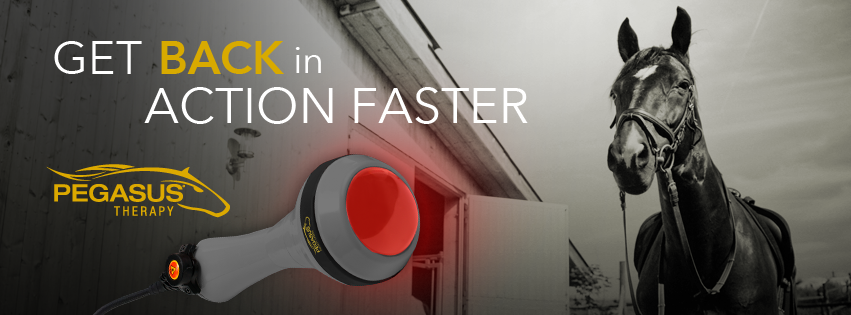Equine Therapy Success Stories: Genuine People, Actual Emotional Makeovers
Equine Therapy Success Stories: Genuine People, Actual Emotional Makeovers
Blog Article
Assessing the Efficiency of Laser Therapy in Horse Therapy for Injury Rehabilitation
The analysis of laser treatment's efficiency in equine injury rehabilitation depends upon several factors, consisting of recuperation time, pain reduction, and tissue regrowth. Clinical research studies recommend noteworthy improvements in conditions like tendonitis and osteo arthritis, credited to enhanced mobile function and elevated ATP manufacturing. Vets frequently observe remarkable end results with laser therapy compared to standard methods, placing it as an important element in equine treatment. Nonetheless, the necessity for constant surveillance and customized treatment strategies can not be overemphasized. What details scientific proof sustains these claims, and exactly how do veterinarians carry out these methods in practice?
Recognizing Laser Treatment
Laser treatment has actually ended up being a crucial device in vet medicine, specifically in the therapy of equine problems. Recognized for its non-invasive nature and efficacy, laser therapy involves the application of specific wavelengths of light to promote cells fixing and minimize swelling. This therapeutic modality is progressively favored for its capacity to speed up the healing procedure in equines dealing with a selection of bone and joint injuries and chronic problems.
The main mechanism behind laser therapy is its capacity to enhance mobile functions. When laser light permeates the skin, it is soaked up by mitochondria, the powerhouse of cells, which brings about enhanced manufacturing of adenosine triphosphate (ATP) This biochemical energy boost promotes cellular repair service and regeneration. Furthermore, laser treatment promotes vasodilation, boosting blood circulation and oxygen delivery to broken tissues, thus quickening recovery.
In equine medication, laser treatment is particularly useful for conditions such as tendonitis, osteoarthritis, and injury healing. The technique is lauded for its pain-relieving homes, permitting horses to regain wheelchair and feature extra rapidly. Veterinarians additionally value its minimal adverse effects contrasted to various other therapy techniques, making it a reliable and safe option for equine care.

Just How Laser Treatment Functions

Upon absorption, these photons cause a collection of biochemical modifications, boosting mitochondrial feature and leading to increased adenosine triphosphate (ATP) manufacturing. This surge in ATP increases mobile metabolic rate, promoting tissue repair and regrowth. In addition, laser treatment regulates inflammatory reactions by affecting cytokine levels and decreasing oxidative anxiety, consequently easing pain and swelling.
Another substantial element of laser therapy is its duty in enhancing microcirculation. The therapy promotes vasodilation, improving blood circulation and oxygen shipment to broken cells (Equine Therapy). This assists in the removal of cellular particles and supports the proliferation of fibroblasts and collagen synthesis, critical for wound recovery
Scientific Proof
The effectiveness of laser treatment in equine therapy has actually been corroborated through different scientific research studies, showcasing its restorative possible throughout an array of conditions. A study conducted by Turner et al. (2012) demonstrated that horses treated with low-level laser therapy (LLLT) for ligament injuries displayed accelerated healing compared to those receiving conventional therapies.
Similarly, research study by Johnson and colleagues (2015) concentrated on equine muscle injuries, disclosing that laser therapy significantly quickened muscle fiber regrowth and decreased muscular tissue tightness. Professional evaluations have actually shown that laser treatment can reduce persistent conditions such as osteo arthritis.
Veterinarian Insights

Vets additionally value the flexibility of laser treatment. It can be used for a wide variety of problems, from surface wounds to deeper musculoskeletal injuries. Dr. Emily Brown highlights its utility in dealing with problems like tendonitis and osteo arthritis, where standard therapies typically fail. She directs out that laser treatment can be tailored to the specific needs of each equine, guaranteeing optimal outcomes.
Moreover, veterinarians value the ability to incorporate laser treatment with other therapy techniques. This multimodal technique can enhance total treatment efficacy, giving a thorough service for equine rehabilitation. Such recommendations from experienced professionals emphasize the growing approval and application of laser treatment in equine medicine.
Practical Factors To Consider
An essential facet of carrying out laser therapy in equine therapy includes comprehending the functional considerations that guarantee its effectiveness and safety. Primarily, it is critical to choose the proper laser tool, as numerous types vary in wavelength, power, and penetration depth. Equine Therapy. Vets should be fluent in these parameters to customize therapy procedures properly to each injury kind
Moreover, the frequency and period of laser treatment sessions need cautious preparation to maximize healing benefits while decreasing any prospective visit their website damaging effects. Constant surveillance of the horse's reaction to treatment can lead necessary adjustments in the treatment routine. Developing a secure and regulated atmosphere during treatments is likewise important to avoid unintended exposure look at this now to laser emissions, which can harm both the steed and the handler.
Educating and qualification of employees carrying out laser treatment are paramount to make certain appropriate method and to maintain security criteria. In addition, keeping precise records of each session, consisting of laser settings and observed results, is crucial for examining the total performance of the therapy and for making data-driven decisions.
Verdict
Laser therapy has actually become a reliable technique in equine injury rehabilitation, providing significant advantages in recuperation time, pain alleviation, and cells healing. Professional researches emphasize significant improvements in problems such as tendonitis and osteo arthritis, credited to boosted mobile function and boosted ATP manufacturing. Veterinarian observations substantiate these searchings for, highlighting remarkable end results contrasted to traditional therapies. For optimum results, constant surveillance and customized therapy protocols remain vital in leveraging the full possibility of laser therapy in equine care.
Report this page